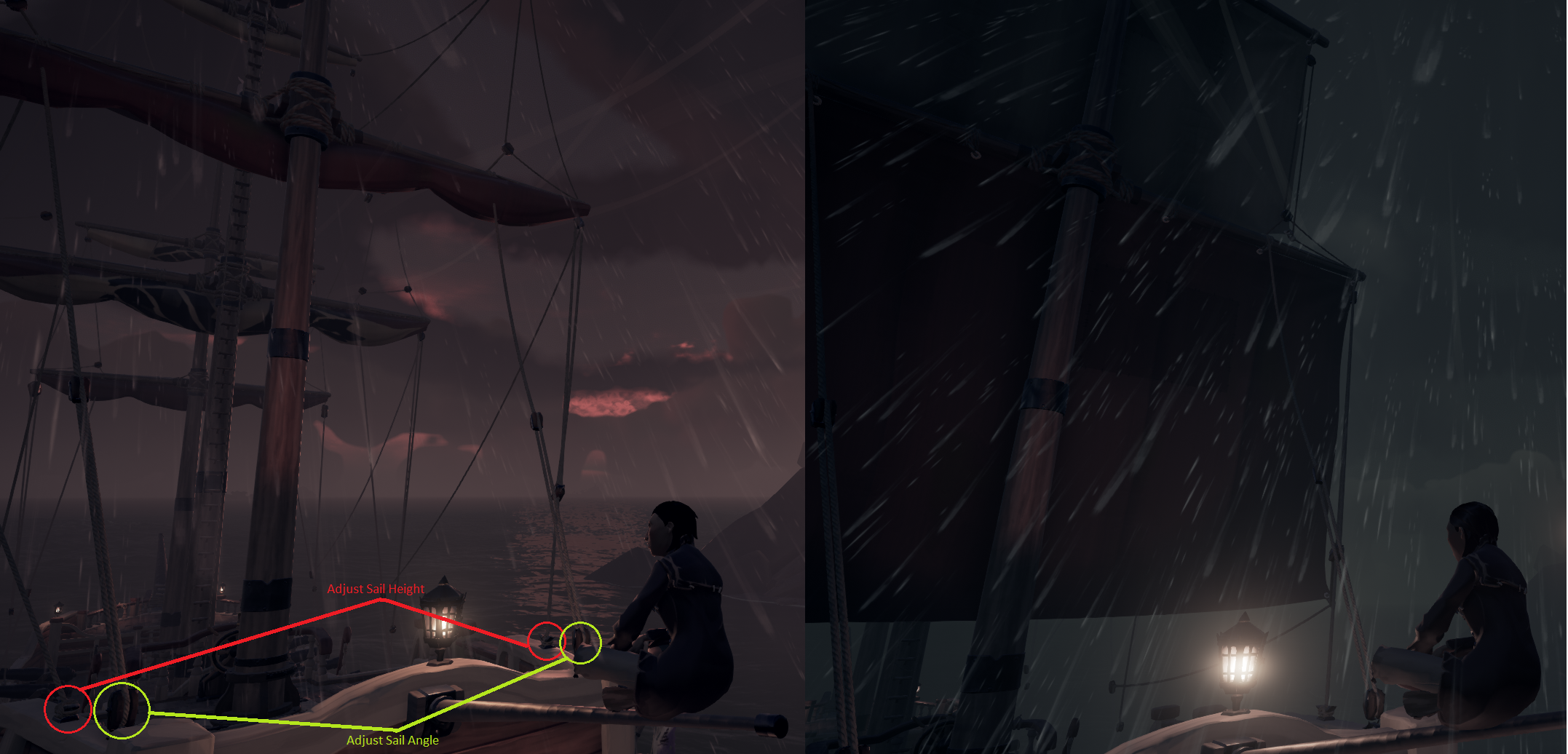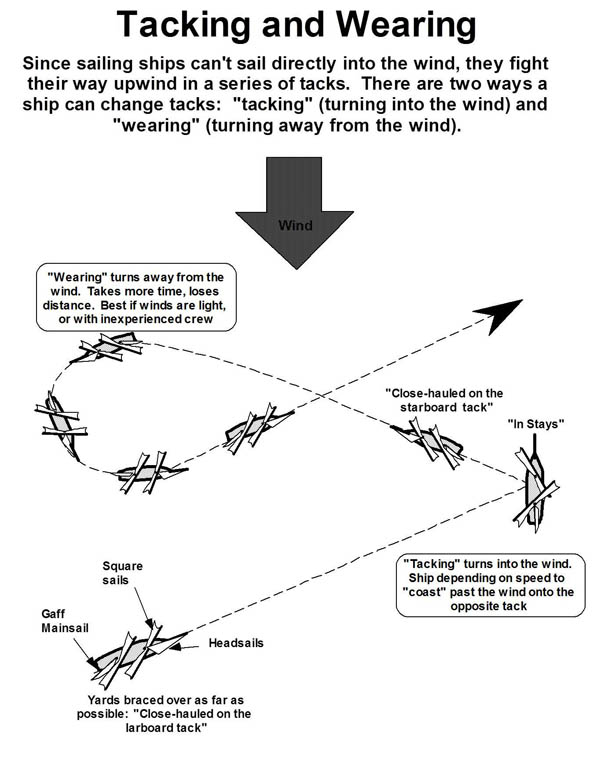overdrive148
En-Route
- Joined
- Apr 17, 2013
- Messages
- 3,903
- Location
- Fort Worth, Texas
- Display Name
Display name:
overdrive148
I figure there's enough boaty people on here to help me out with this.
Yhis new game is coming out called Sea of Thieves (crew based pirate game) for PC and XBone. I picked it up and I've been playing around in the closed beta.
This is the Galleon:

You get a crew of 4. One guy steers the ship. The rest fire/load cannons, repair holes and ship damage, bucket out water, spot ships, get drunk, play music, and adjust the sails manually. Each mast has two controls, raise/lower sails and adjust sailing angle. You can see wind direction and velocity by looking above you.
What I want to know is how the heck you're supposed to use the sails effectively. I get the concept of put the sails with the wind and the ship goes. I know how an aircraft flies but sailboats being able to go upwind is absolute magic to me.
Is the best way to travel with all 3 sails aligned with the wind (with this ship/sail configuration)?
Is there a better sail configuration than that for combat and maneuverability across the wind?
Does pulling sails up enhance rudder and turning effectiveness?
Can you turn a ship with no forward momentum by rudder alone?
Is there a way to get my crewmates off of the !&#$%# cannons to work the sails?

This is the Sloop (2 man crew). 1 cannon per side, a little slower in a straight line than the Galleon (I am assuming because less sail area), and more maneuverable. And only 1 sail. We were outrun by one of these after they stole our booty. Literally climbed the side of the boat and stole it before we could stop them. I could hear them laughing about it. I wanted to blow them out of the water but we couldn't catch up and broadside them because the sails were all different directions and the captain was swinging left and right so the wind was never in the same spot.
Yhis new game is coming out called Sea of Thieves (crew based pirate game) for PC and XBone. I picked it up and I've been playing around in the closed beta.
This is the Galleon:

You get a crew of 4. One guy steers the ship. The rest fire/load cannons, repair holes and ship damage, bucket out water, spot ships, get drunk, play music, and adjust the sails manually. Each mast has two controls, raise/lower sails and adjust sailing angle. You can see wind direction and velocity by looking above you.
What I want to know is how the heck you're supposed to use the sails effectively. I get the concept of put the sails with the wind and the ship goes. I know how an aircraft flies but sailboats being able to go upwind is absolute magic to me.
Is the best way to travel with all 3 sails aligned with the wind (with this ship/sail configuration)?
Is there a better sail configuration than that for combat and maneuverability across the wind?
Does pulling sails up enhance rudder and turning effectiveness?
Can you turn a ship with no forward momentum by rudder alone?
Is there a way to get my crewmates off of the !&#$%# cannons to work the sails?

This is the Sloop (2 man crew). 1 cannon per side, a little slower in a straight line than the Galleon (I am assuming because less sail area), and more maneuverable. And only 1 sail. We were outrun by one of these after they stole our booty. Literally climbed the side of the boat and stole it before we could stop them. I could hear them laughing about it. I wanted to blow them out of the water but we couldn't catch up and broadside them because the sails were all different directions and the captain was swinging left and right so the wind was never in the same spot.



